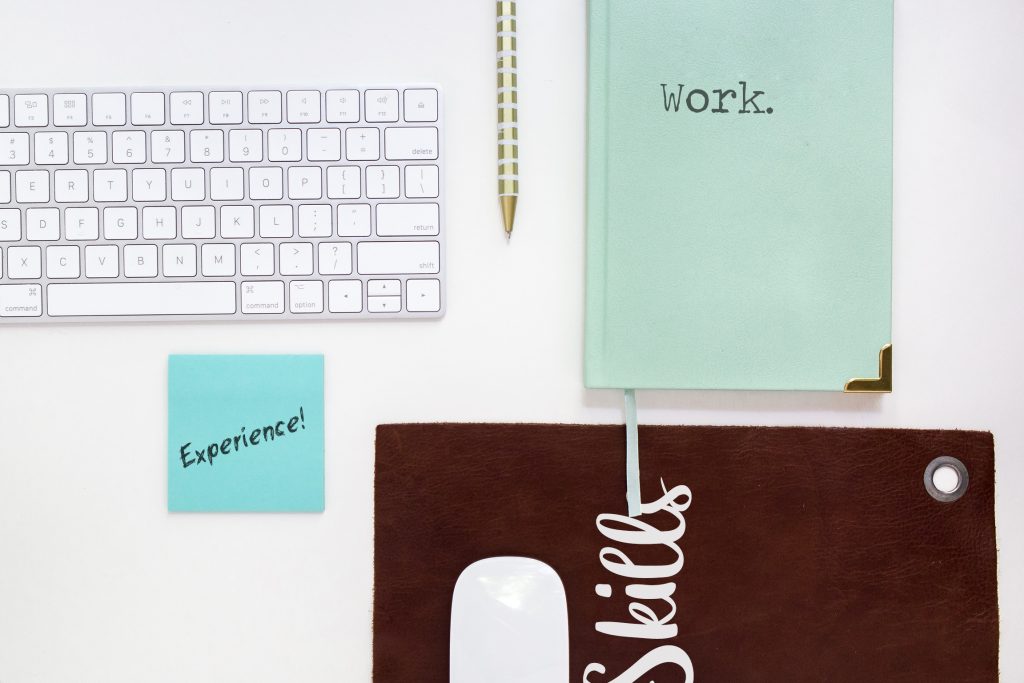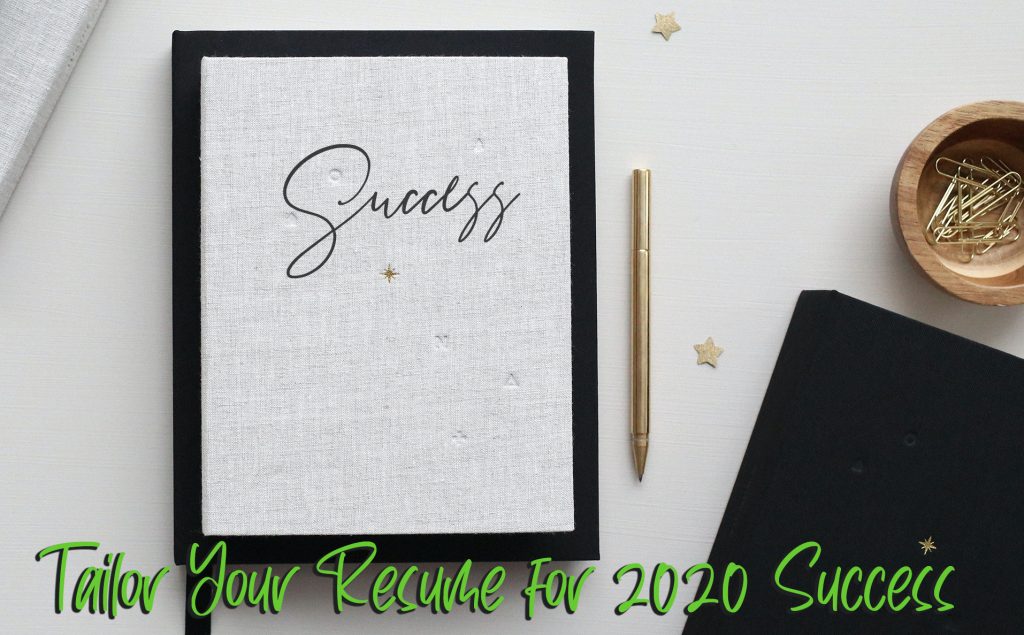by Chrissy Roshak
September 3, 2020
When was the last time you updated your resume? If you haven’t even looked at it since the last time you searched for a job, you’re not alone. It’s a great idea to open up your resume once a year and update your skills, but most of us haven’t made that a priority. Luckily the silver lining to quarantine and social distancing is that there’s finally time for projects like updating your resume. September also happens to be Update Your Resume Month!
The way we search for jobs in America has dramatically changed this year, making now the perfect time to refresh your resume. I’ll walk you through what to keep, what to add, and what to remove from your resume. I’ll also show you the best way to organize your resume to make sure recruiters can zero in on your best qualities to get you hired.
Add it: Resume Summary
Resume summaries are hot this year, and with good reason. A resume summary gives you space to explain your unusual situation – like why you’re suddenly changing careers during a pandemic. It gives you space to explain why your rockstar skills in your old job absolutely make you the right person for the job you just applied for. Especially if it’s in a completely different, essential field that’s hiring instead of laying people off. Read more about resume summaries here.

Update it: Objective

The Objective is like the more passive cousin of the Resume Summary. It simply states the purpose of your resume (to get a job, duh). It Might highlight your best qualities. But it lacks purpose. It doesn’t highlight how your best skills make you the most qualified person for the job you’re applying for. Revamp it with more active language that explains how your skills will benefit the company, and rename it “Resume Summary.”
Remove it: Old Work Experience
Recruiters and hiring managers don’t spend much time looking at your resume before deciding whether or not to contact you about their open job. Don’t clutter your resume with old, irrelevant experience. Remove it to make space to highlight relevant experience.
You also run the risk of your recruiter taking guesses about your age if you showcase a long work history on your resume. Take this piece out of the equation by removing jobs you held in your distant past. Keep enough recent experiences to demonstrate a consistent work history, and beyond that only include old jobs if it’s the only way to showcase skills relevant to the job you’re applying for. For example, if you’re applying for a position that requires strong computer skills, and there’s another way to demonstrate your stellar Microsoft Excel skills, cut that old Data Entry job you held 12 years ago.

Edit & Update It: Personal Information
Back in the day people used to put all kinds of crazy personal information on their resume. There are two very important reasons to spend some serious time trimming and updating this section. First, you want hiring managers to be able to contact you if they want to bring you in for your dream job. If you have old contact information on your resume, they’re not going to launch a Google search to track you down. They’re going to assume you didn’t really want the job and move on to the next candidate. Double check your phone number and e-mail address to make sure they are correct. Read them backwards to help spot errors. I have a relative who missed a digit in their contact information on a job application! Take the time to get it right.

Second, including too much personal information on your resume opens you up to all kinds of security problems including identity theft and fraud. You should include e-mail address and phone number. If you include a social media account, limit it to LinkedIn. Many recruiters will search for you on other platforms, but you don’t need to invite them to do it. You can include the city you live in, but there is no need to include your full address at this stage of the game. Particularly since you’re probably posting your resume on public platforms like Indeed and LinkedIn in an effort to be seen by recruiters. Keep your home address private.
You should also absolutely remove any of the following things from your resume: your social security number, religion, marital status, gender, sexual orientation, your photo, and additional phone numbers. Only include the best phone number to reach you, and make sure voicemail is setup in case you miss the call. Religion, marital status, gender, sexual orientation, and photo all open you up to unnecessary bias and discrimination. They also don’t have anything to do with being qualified for the job. Remove excess personal data to make room to highlight the qualities hiring managers are looking for.
Organize it
Your name should be the very first thing at the top of your resume. You can make it stand out with a larger font size, and make it bold. But don’t use a fancy font or crazy colors. Keep in mind that a lot of companies use resume parsing software to enter your resume into a computer system. If your font isn’t legible your resume won’t get very far with the recruiter or the software.
I like the idea of adding a title directly below your name. However, I would only recommend doing this if you have experience that backs it up and it applies to the position you’re applying for. If this is your first job or you’re trying to switch careers, leave it off.
Your contact info goes under your name. Include phone number, e-mail address, and maybe your LinkedIn url. Leave it off if you never check it or haven’t updated it.
The resume summary goes under your contact info. Keep it short, relevant, and to the point.
The next section will depend on your experience and your goals. Here are some reasons you might put education next:
- You’re a recent graduate looking for your first job in your field
- You’re changing careers and looking for a job related to your education
And here are a few reasons you might put your work experience ahead of your education:
- You graduated more than a year ago
- You’re looking for a job that isn’t directly related to what you studied
- Your work history is more relevant to the job you’re looking for than your education was

Listing Work Experience

Your work experience should go in chronological order, with your most recent experience first. Here’s what you should include for each entry:
- Job title
- Month and year of your start and end dates for each job to show consistent work history
- Name of the company you worked for
- Use bullet points to give a list of your accomplishments and skills.
If you’re switching careers limit your accomplishments and skills to those that will be relevant to the job you’re going for. For example, if you worked in fast food, but you’re going for a receptionist position, highlight your customer service skills. Show them you know how to handle multiple customers coming in the door at the same time. Don’t waste space explaining your exceptional cooking skills.
Listing Education
How you list your education depends on whether or not it’s relevant to the job you’re applying for. If it is, list it similar to the work experience above including a short bulleted list of your achievements and give details about your success. However, if you studied US History and you’re looking for a job as a Forklift Operator, the hiring manager only wants to know one thing about your education: did you stick with it? Here’s what to include if your education is not directly related to the job you’re applying for:
- The year you obtained your degree
- The name of the degree you earned
- The name of the school you attended
Once you’ve edited your resume, give your recruiter a call and have them take a look at it. Ask them for their honest advice and make any edits they recommend. After all, your recruiter is an expert on what a great resume looks like.
Check out our other blog posts for more useful tips and tricks!

